Unveiling the Future: photovoltaic (PV) or thermophotovoltaic (TPV) technologies in an ever-evolving landscape of renewable energy, two groundbreaking technologies stand at the forefront: photovoltaic (PV) and thermophotovoltaic (TPV) systems. With a collective mission to harness sustainable energy sources, these technologies offer distinct approaches to converting sunlight and thermal radiation into electricity. Join us on a journey as we dissect the intricacies of PV and TPV technologies, exploring their efficiency, environmental impact, material requirements, cost considerations, and more. Delve into the comparative analysis, uncovering the challenges they face and the technological advancements shaping their future prospects. As we navigate this exploration, the path to a cleaner, more sustainable energy future unfolds before us.
Table of Contents
Basic Principles: photovoltaic (PV) or thermophotovoltaic (TPV)
Understanding the basic principles of photovoltaic (PV) and thermophotovoltaic (TPV) technologies is fundamental to appreciating their distinct approaches to energy conversion.
Photovoltaic (PV) Systems
How PV Works: PV systems operate on the principle of the photovoltaic effect, a phenomenon where certain materials generate an electric current when exposed to sunlight. The core component is the solar cell, which is typically made of semiconductor materials like silicon. When photons from sunlight strike the semiconductor, they energize electrons, creating an electric current. This current is then harnessed as usable electricity.
Key Components:
- Solar Cells: The building blocks of PV systems, responsible for converting sunlight into electricity.
- Inverter: Converts direct current (DC) generated by solar cells into alternating current (AC), suitable for use in homes and businesses.

Thermophotovoltaic (TPV) Systems
How TPV Works: In TPV systems, energy conversion begins with a heat source, which emits thermal radiation. This thermal radiation is then directed toward a photovoltaic cell, where it is converted into electricity. Unlike PV systems, TPV doesn’t rely on direct sunlight but can utilize any heat source, making it versatile in various applications.
Key Components:
- Heat Source: Any heat-producing element, such as a fuel combustion system or concentrated solar power setup.
- TPV Cell: Similar to traditional solar cells but optimized for converting thermal radiation into electricity.


Comparative Analysis
Differentiating Factors:
- Source of Energy: PV relies on direct sunlight, while TPV can utilize any heat source, broadening its applicability.
- Versatility: PV systems are well-suited for sunlight-rich environments, while TPV’s adaptability to diverse heat sources makes it viable in various conditions.

Efficiency
Efficiency is a critical metric when comparing photovoltaic (PV) and thermophotovoltaic (TPV) systems. It directly impacts the effectiveness of converting available energy into usable electricity.
Photovoltaic (PV) Systems
Efficiency Overview: PV systems have been at the forefront of solar energy utilisation, boasting impressive efficiencies in converting sunlight into electricity. The efficiency of PV cells typically ranges from 15% to 22%, with some advanced technologies pushing beyond 25%.
Factors Influencing Efficiency:
- Quality of Solar Cells: High-quality materials and advanced manufacturing processes contribute to better conversion efficiency.
- Sunlight Intensity: Efficiency increases with higher sunlight intensity, making PV systems particularly effective in regions with abundant sunlight.

Image Placement: Include a graph or chart illustrating the efficiency curve of different types of PV cells. This visual representation can highlight the varying efficiencies and set the stage for a comparative analysis with TPV.
Thermophotovoltaic (TPV) Systems
Efficiency Overview: TPV systems are gaining attention for their potential to achieve higher efficiencies, especially in scenarios with consistent and high-temperature heat sources. Current TPV technologies are in the range of 20% to 30% efficiency, with ongoing research aiming to improve these figures.
Factors Influencing Efficiency:
- Heat Source Temperature: Higher temperatures of the heat source lead to increased thermal radiation, enhancing TPV efficiency.
- Material Properties: The optimal selection of materials for TPV cells is crucial for maximizing efficiency.

Comparative Analysis
Highlighting Differences:
- Versatility: PV systems excel in a wide range of sunlight conditions. Bearing this in mind, though, their efficiency can be influenced by factors like weather and time of day.
- Temperature Dependence: TPV systems, being less dependent on direct sunlight, can maintain higher efficiency levels in consistent high-temperature environments.
Image Placement: Insert a side-by-side comparison image summarizing the efficiency characteristics of PV and TPV systems. Icons representing sunlight and heat sources can visually reinforce the key points of differentiation.
Understanding the efficiency profiles of PV and TPV systems is crucial for making informed decisions about their suitability for specific applications. Visual aids strategically placed in the content enhance the reader’s grasp of these efficiency dynamics.
Energy Conversion Mechanism
Understanding the energy conversion mechanisms is pivotal in comparing photovoltaic (PV) and thermophotovoltaic (TPV) technologies. Let’s delve into the distinct processes that drive these systems.
Photovoltaic (PV) Systems
Conversion Process: PV systems operate on the principle of the photovoltaic effect. When sunlight, which consists of photons, strikes the semiconductor material within the solar cell, it excites electrons, creating an electric current. This direct conversion of sunlight into electricity is the hallmark of PV technology.
Key Components:
- Solar Cells: Semiconductor materials, typically silicon, capture and convert sunlight into electrical energy.
- Inverter: Converts direct current (DC) generated by solar cells into alternating current (AC) for use in homes and businesses.
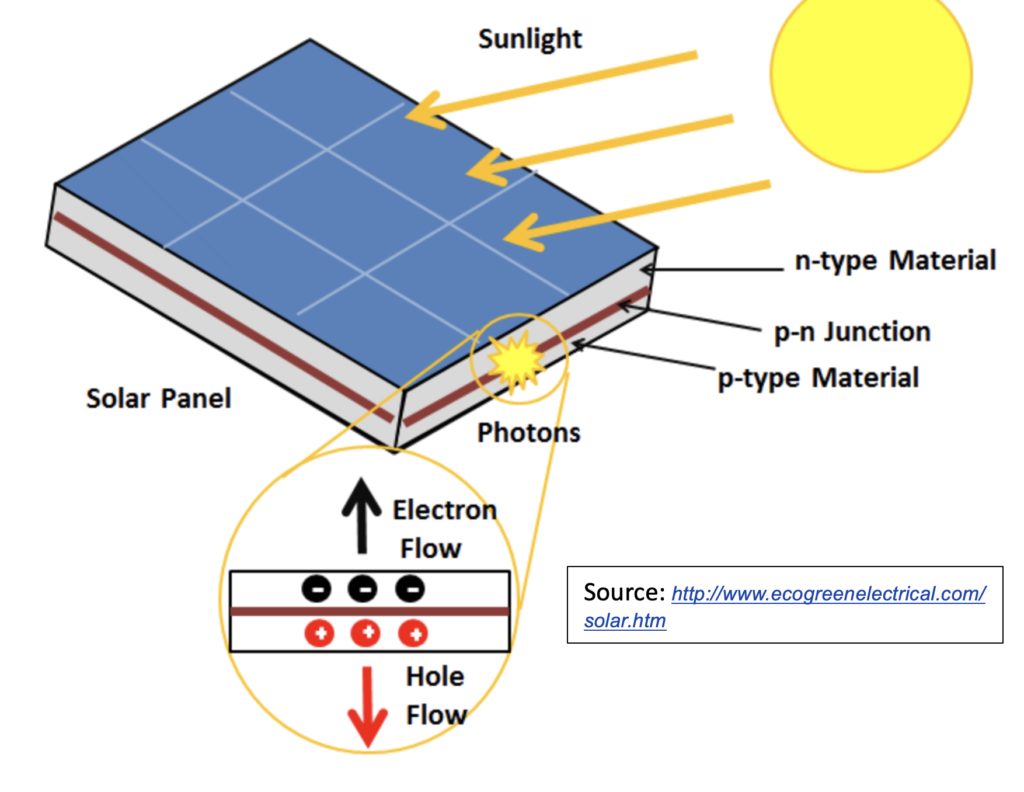
Image Placement: Include a schematic diagram illustrating the photovoltaic effect within a solar cell. This visual aid will help readers visualize how sunlight is directly transformed into electricity in a PV system.
Thermophotovoltaic (TPV) Systems
Conversion Process: TPV systems, in contrast, rely on a two-step energy conversion process. First, a heat source is used to generate thermal radiation. This thermal radiation is then directed towards a TPV cell, where it is converted into electricity. Unlike PV, TPV doesn’t require direct sunlight but can utilize any heat source.
Key Components:
- Heat Source: Generates thermal radiation through combustion, concentrated solar power, or other means.
- TPV Cell: Specialized cells optimized for converting thermal radiation into electricity.

Comparative Analysis
Differentiating Features:
- Energy Source: PV relies on direct sunlight, making it location-dependent. TPV, on the other hand, is versatile and capable of utilizing any heat source, expanding its applicability.
- Energy Pathway: While both technologies ultimately generate electricity, PV follows a direct path from sunlight to electricity, whereas TPV involves an intermediate step of thermal radiation.
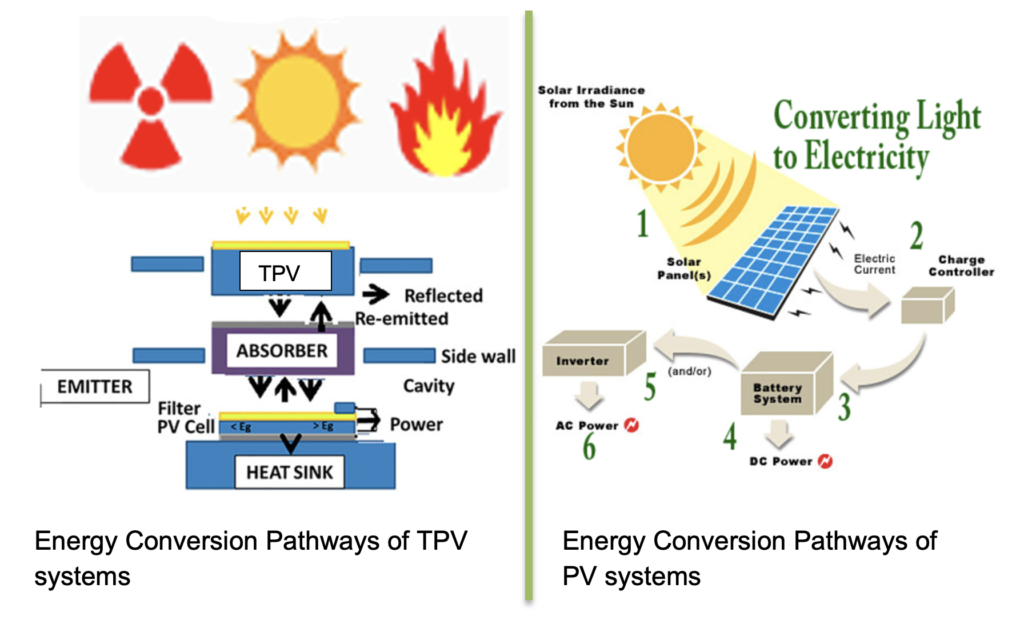
Environmental Impact
Assessing the environmental impact is crucial when comparing the sustainability of photovoltaic (PV) and thermophotovoltaic (TPV) technologies. Let’s explore how each technology contributes to or mitigates environmental concerns.
Photovoltaic (PV) Systems
Environmental Contribution: PV systems are renowned for their positive environmental impact. During operation, they produce electricity without emitting greenhouse gases, reducing reliance on fossil fuels and minimizing air pollution. Moreover, advancements in manufacturing processes have led to a decline in the use of toxic materials, making PV systems environmentally friendly.

End-of-Life Considerations: While PV systems have a long operational life, considerations for end-of-life management are essential. Recycling programs for solar panels have been established to recover valuable materials like silicon, glass, and metals, reducing the environmental footprint associated with disposal.
Thermophotovoltaic (TPV) Systems
Environmental Considerations: TPV technology is still in its research and development phase, and its environmental impact is an evolving aspect. Depending on the heat source used, TPV systems may introduce emissions during operation. For instance, if a combustion-based heat source is employed, there might be carbon dioxide emissions.
Research Efforts: Ongoing research focuses on developing TPV systems with minimal environmental impact. Exploration of alternative, cleaner heat sources and advancements in material science aim to address and clarify potential environmental concerns associated with TPV.
Comparative Analysis
Comparing Footprints:
- Operational Phase: PV systems have a well-established track record of clean energy production during their operational life.
- Developmental Phase: TPV systems, being in the developmental phase, necessitate continued research and innovation to ensure a positive environmental profile.

Applicability
Exploring the applicability of photovoltaic (PV) and thermophotovoltaic (TPV) technologies provides valuable insights into their versatility and suitability for different industrial and domestic settings. Let’s delve into the distinct applications of these renewable energy solutions.
Photovoltaic (PV) Systems
Wide Range of Applications: PV systems have established themselves as versatile energy solutions with applications across various sectors.
- Residential: Solar panels on rooftops provide clean energy for homes, reducing dependence on traditional grid power.
- Commercial: Businesses integrate solar arrays to lower electricity costs and demonstrate a commitment to sustainability.
- Industrial: Large-scale PV installations power industrial operations, contributing to cleaner production.
Integration with Grid and Off-Grid Systems: PV systems seamlessly integrate with existing power grids, supplying electricity during peak sunlight hours. Additionally, they are well-suited for off-grid applications, such as remote areas and standalone systems for emergency power.
Image Placement: Include a collage of images showcasing PV panels in diverse settings—residential rooftops, commercial installations, and industrial-scale solar farms. This visual representation helps readers visualize the widespread applicability of PV systems.
Thermophotovoltaic (TPV) Systems
Specialized Applications: While still in the research and development phase, TPV systems show promise in specialized applications.
- Waste Heat Recovery: TPV technology can efficiently convert waste heat from industrial processes into electricity, enhancing overall energy efficiency.
- Concentrated Solar Power: TPV has the potential to be integrated into concentrated solar power systems, expanding its usability.
Research and Innovation: Ongoing research aims to broaden the applicability of TPV systems by exploring new heat sources and optimizing materials for diverse environments.
Image Placement: Incorporate conceptual illustrations or infographics depicting TPV systems in specialized applications like waste heat recovery and concentrated solar power. Visual aids enhance readers’ understanding of the potential uses of TPV technology.
Comparative Analysis
Versatility vs. Specialization:
- Versatility of PV: PV systems offer a broad range of applications, making them suitable for various environments and needs.
- Specialization of TPV: TPV, while currently more specialized, is expected to diversify its applications with ongoing research and technological advancements.


Understanding the applicability of PV and TPV technologies is crucial for determining their suitability in different contexts. Visual aids strategically placed throughout the content enhance the reader’s grasp of the diverse applications of these renewable energy solutions.
Material Requirements
Material Requirements
Exploring the material requirements of photovoltaic (PV) and thermophotovoltaic (TPV) technologies sheds light on the unique materials. This is crucial for their functionality. Let’s delve into the distinctive material considerations for these renewable energy solutions.
Photovoltaic (PV) Systems
Semiconductor Materials: PV systems heavily rely on semiconductor materials, with silicon being the most common. Silicon solar cells dominate the market due to their efficiency and cost-effectiveness. Other semiconductor materials, such as cadmium telluride (CdTe) and copper indium gallium selenide (CIGS), are also used in specific applications.
Supporting Materials: Besides semiconductors, PV systems incorporate additional materials for support and protection.
- Glass: Protects solar cells and allows sunlight penetration.
- Metal Frames: Provide structural support for the solar panels.
- Backsheets: Shield the back of solar panels from environmental factors.
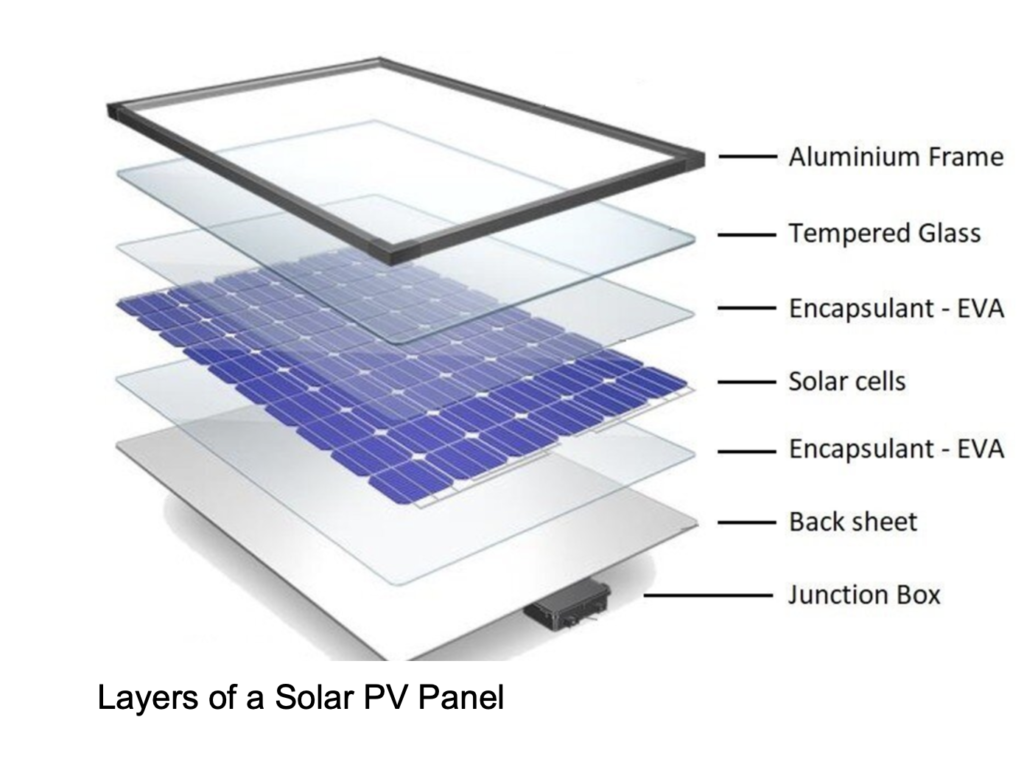
Thermophotovoltaic (TPV) Systems
High-Temperature Materials: TPV systems operate in higher-temperature environments, demanding materials capable of withstanding heat.
- TPV Cells: Specialised semiconductor materials optimised for converting thermal radiation into electricity.
- Heat Absorbers: Materials designed to efficiently absorb and transfer heat to the TPV cells.
Reflective Materials: To enhance the concentration of thermal radiation on TPV cells, reflective materials are employed to redirect and focus the radiation.

Comparative Analysis
Differing Material Characteristics:
- PV Materials: Focus on efficient sunlight absorption and electricity generation, utilizing various semiconductor materials.
- TPV Materials: Emphasis on withstanding higher temperatures and efficiently capturing and converting thermal radiation.
Image Placement: Include a side-by-side comparison image summarizing the material characteristics of PV and TPV systems. Icons representing silicon solar cells for PV and specialized high-temperature materials for TPV can visually emphasize their distinct material requirements.
Understanding the material requirements of PV and TPV technologies is pivotal for assessing their durability and effectiveness. Visual aids strategically placed throughout the content enhance the reader’s grasp of the unique materials crucial for the functionality of these renewable energy solutions.
Cost Considerations
Delving into the cost considerations of photovoltaic (PV) and thermophotovoltaic (TPV) technologies is essential. This evaluates the technology’s economic feasibility in producing PV and TPV. Let’s explore the key factors influencing costs and how these technologies compare in terms of financial considerations.
Photovoltaic (PV) Systems
Initial Costs: PV systems have experienced significant cost reductions over the years, primarily due to advancements in manufacturing processes and economies of scale. The initial costs include the purchase and installation of solar panels, inverters, mounting structures, and other system components.
Operational and Maintenance Costs: Once installed, PV systems generally have low operational and maintenance costs. Solar panels have no moving parts, reducing the need for regular maintenance. Cleaning and occasional inspections are common tasks to ensure optimal performance.
Image Placement: Include a bar chart or graph illustrating the historical trends of PV system costs, emphasizing the decline in initial costs over time. This visual representation can provide a clear overview of the cost dynamics associated with PV technology.
Thermophotovoltaic (TPV) Systems
Current Challenges: TPV technology is still in the developmental phase, and as a result, the initial costs can be higher compared to mature PV systems. Research and development efforts, coupled with the need for specialized materials, contribute to the current challenges of cost-effectiveness.
Potential for Advancements: As TPV technology matures and undergoes advancements, there is potential for cost reductions. Innovations in materials, manufacturing processes, and scalability may contribute to making TPV systems more economically competitive.
Image Placement: Incorporate a conceptual illustration depicting the factors influencing the cost of TPV systems. Icons representing research, materials, and scalability can visually reinforce the considerations affecting TPV technology costs.
Comparative Analysis
Initial vs. Long-Term Costs:
- PV systems: generally have lower initial costs and a proven track record of long-term affordability.
- TPV Systems: Higher initial costs due to the developmental stage, but potential for long-term cost-effectiveness with technological advancements.
Image Placement: Include a side-by-side comparison image summarizing the initial and long-term cost considerations of PV and TPV systems. Icons representing initial costs, research and development, and long-term affordability can visually emphasize the comparative analysis.
Understanding the cost dynamics of PV and TPV technologies is crucial for making informed decisions about their implementation. Visual aids strategically placed throughout the content enhance the reader’s grasp of the economic considerations associated with these renewable energy solutions.
Challenges and Limitations
Exploring the challenges and limitations of photovoltaic (PV) or thermophotovoltaic (TPV) technologies is essential for gaining a comprehensive understanding of their capabilities and potential drawbacks.
Photovoltaic (PV) Systems
Intermittency: One notable challenge for PV systems is intermittency, as electricity generation depends on sunlight. This can lead to fluctuations in power output, requiring the integration of energy storage solutions or backup power sources for continuous supply during non-sunny periods.
Land Use: Large-scale solar farms, while effective in harnessing sunlight, require significant land area. Balancing the need for clean energy with considerations for land use and ecological impact poses a challenge, especially in densely populated regions.
Image Placement: Include a combination of images showcasing both the advantages and challenges of PV systems. For challenges like intermittency, use icons or visual representations depicting variations in sunlight. For land use considerations, incorporate images of solar farms juxtaposed with discussions on their environmental impact.
Thermophotovoltaic (TPV) Systems
Material Durability: TPV systems operate in high-temperature environments, posing challenges for material durability. Overcoming material degradation and ensuring the longevity of TPV cells and heat absorbers is an ongoing research focus.
Heat Source Dependence: The efficiency of TPV systems is closely tied to the quality and consistency of the heat source. Variability in the heat source can impact the system’s overall performance, making it crucial to address issues related to heat source dependence.

Comparative Analysis
Addressing Challenges:
- PV Systems: Addressing intermittency through energy storage solutions and exploring innovations in solar tracking technologies.
- TPV Systems: Ongoing research to enhance material durability and explore alternative, consistent heat sources.
Image Placement: Include a side-by-side comparison image summarising the challenges faced by PV and TPV systems. Icons representing intermittency, land use concerns, material durability, and heat source dependence can visually emphasize the distinct challenges associated with each technology.
Understanding the challenges and limitations of PV and TPV technologies is vital for informed decision-making and ongoing advancements in renewable energy. Visual aids strategically placed throughout the content enhance the reader’s grasp of the complexities associated with these innovative technologies.
Technological Advancements
Exploring the technological advancements in photovoltaic (PV) or thermophotovoltaic (TPV) technologies provides insights into the dynamic nature of renewable energy innovation. Let’s delve into recent developments and emerging trends that shape the future of these technologies.
Photovoltaic (PV) Systems
Advanced Materials: Recent advancements in PV technology focus on the development of advanced materials for solar cells. Beyond traditional silicon, researchers are exploring materials such as perovskites and organic photovoltaic materials, aiming to improve efficiency and reduce manufacturing costs.
Bifacial Solar Panels: Bifacial solar panels, capable of capturing sunlight from both sides, represent a notable advancement. These panels enhance energy yield by utilizing reflected sunlight, making them particularly effective in certain environments.
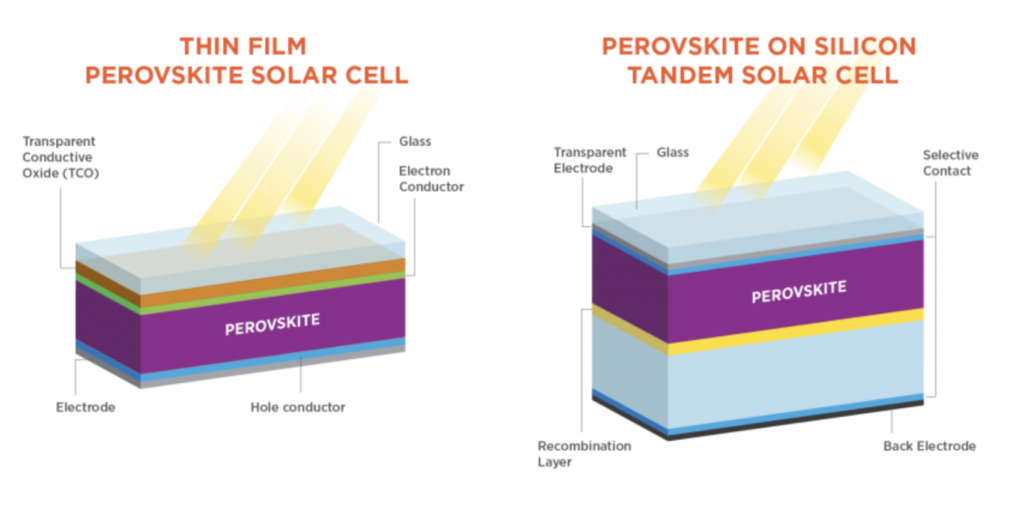

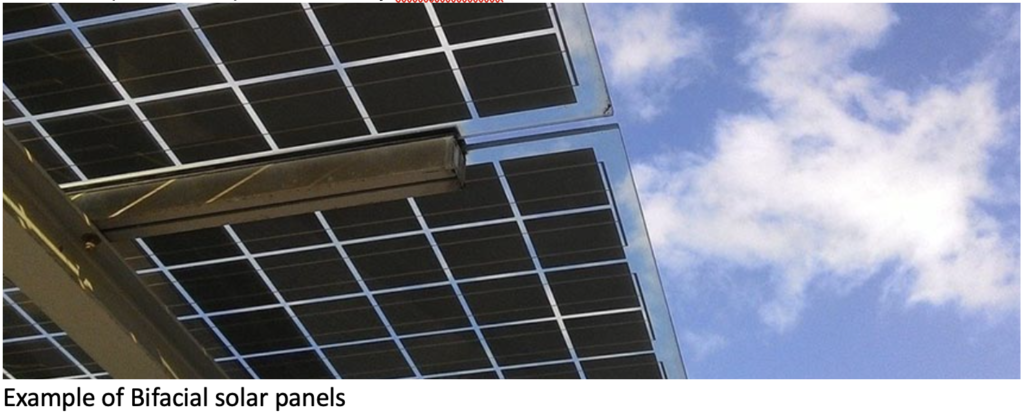
Thermophotovoltaic (TPV) Systems
Material Innovations: Ongoing research in TPV technology focuses on material innovations for improved efficiency and durability. Advanced semiconductors and heat-absorbing materials are being explored to address challenges related to material degradation.
Alternative Heat Sources: Advancements in TPV systems include the exploration of alternative, consistent heat sources beyond traditional combustion methods. This innovation aims to enhance the reliability and applicability of TPV technology.
Image Placement: Incorporate visuals such as graphs or charts illustrating the progression of efficiency in TPV systems over time. Additionally, include images representing alternative heat sources, such as concentrated solar power, to visually highlight technological advancements.
Comparative Analysis
Comparing Progress:
- PV Systems: Emphasis on material diversity and design innovations, contributing to increased efficiency and cost-effectiveness.
- TPV Systems: Focus on material advancements and the exploration of alternative heat sources, addressing challenges, and expanding applicability.

Integration with Energy Storage
Exploring the integration of photovoltaic (PV) and thermophotovoltaic (TPV) technologies with energy storage solutions is crucial. It validates achieving a reliable and continuous power supply. Let’s delve into how these renewable energy systems pair with storage technologies.
Photovoltaic (PV) Systems
Intermittency and Energy Storage: One of the primary challenges of PV systems is intermittency, as they rely on sunlight. To address this, integrating PV systems with energy storage solutions, such as batteries, becomes essential. During periods of abundance of sunlight, excess electricity is generated. This electricity generatyed by PV panels can be stored in batteries for later use during cloudy days or at night.
Smart Inverters and Grid Integration: Technological advancements in smart inverters enable seamless integration with the power grid. Smart inverters allow bidirectional flow of electricity, enabling surplus energy to be fed back into the grid and drawing electricity when PV generation is insufficient.

Thermophotovoltaic (TPV) Systems
Potential for Continuous Power: TPV systems, being less dependent on direct sunlight, exhibit potential for continuous power generation. However, integrating TPV with energy storage solutions can further enhance reliability, ensuring a consistent power supply even during variations in heat source intensity.
Heat Storage Technologies: In addition to electrical energy storage, TPV systems can benefit from innovations in heat storage technologies. Capturing excess thermal energy during high-intensity periods and utilizing it during low-intensity periods contribute to a more stable and continuous power output.

Addressing Intermittency:
- PV Systems: Mitigating intermittency through electrical energy storage, ensuring a consistent power supply
- TPV Systems: Leveraging continuous power potential, with the option to further enhance stability through combined electrical and thermal energy storage
Image Placement: Include a side-by-side comparison image summarizing the integration of PV and TPV systems with energy storage. Icons representing solar panels, TPV cells, inverters, and storage units can visually emphasize the strategies employed by each technology to address intermittency.
Understanding how PV and TPV systems integrate with energy storage solutions is key to achieving reliable and resilient renewable energy systems. Visual aids strategically placed throughout the content enhance the reader’s grasp of the integration processes and their role in ensuring a continuous power supply.
Future Prospects
Exploring the future prospects of photovoltaic (PV) and thermophotovoltaic (TPV) technologies provides valuable insights into the evolving landscape of renewable energy. Let’s delve into the potential advancements and applications that lie ahead for these innovative technologies.
Photovoltaic (PV) Systems
Advancements in Efficiency: Future prospects for PV systems include continued advancements in solar cell efficiency. Ongoing research into next-generation materials, improved manufacturing techniques, and the adoption of innovative designs aim to push efficiency levels beyond current limits, enhancing the overall performance of PV technology.
Innovations in Solar Panel Design: Researchers are exploring novel solar panel designs, such as transparent solar cells, for integration into windows and facades. These advancements expand the potential applications of PV systems, making them more versatile in various settings.
Thermophotovoltaic (TPV) Systems
Expanded Applicability: The future holds promises for the expanded applicability of TPV systems. As research progresses, TPV technology may find niche applications in areas like waste heat recovery, where its unique ability to convert thermal radiation into electricity can contribute to increased energy efficiency.
Innovative Heat Sources: Advancements in heat source technologies can enhance the performance of TPV systems. Exploring alternative, clean, and consistent heat sources holds the potential to address challenges. These relate to heat source variability, further establishing TPV as a reliable energy conversion solution.
Comparative Analysis
Divergence in Development Paths:
- PV Systems: Focused on efficiency improvements and innovative designs for broader integration into various environments.
- TPV Systems: Geared towards specialized applications and advancements in heat source technologies for increased reliability.
Understanding the future prospects of PV and TPV technologies provides a glimpse into the evolving landscape of renewable energy. Visual aids strategically placed throughout the content enhance the reader’s grasp of the potential advancements and applications that lie ahead for these groundbreaking technologies.
Conclusion and Final Thought: Our Verdict
In conclusion, the comparison between photovoltaic (PV) and thermophotovoltaic (TPV) technologies reveals a dynamic landscape of innovation and sustainability. In the realm of renewable energy, both technologies have made significant strides, each with its own unique strengths and challenges.
Photovoltaic (PV) Systems continue to be a stalwart in the renewable energy sector. With ongoing advancements in solar cell efficiency and the exploration of innovative designs, PV systems showcase a versatile and reliable source of clean electricity. Integration with energy storage solutions and smart grid technologies addresses challenges such as intermittency and positioning PV systems as a cornerstone for widespread adoption.
Thermophotovoltaic (TPV) Systems, while in the developmental phase, exhibit promise in specialised applications, particularly in waste heat recovery. Ongoing research into material durability and advancements in heat source technologies may pave the way for broader applicability. TPV’s ability to convert thermal radiation into electricity provides a unique angle for enhancing energy efficiency.

Looking ahead, the future prospects for both technologies are exciting. PV systems are poised for efficiency improvements and innovative designs, expanding their integration into various environments. On the other hand, TPV systems may find niche applications and benefit from advancements in alternative heat sources, contributing to increased reliability.
As the world increasingly embraces sustainable energy solutions, the choice between PV and TPV technologies depends on factors such as the intended application, environmental considerations, and technological advancements. Whether capturing sunlight directly or converting thermal radiation into electricity, these technologies collectively contribute to a more sustainable and resilient energy future.
In the grand tapestry of renewable energy, the interplay between PV and TPV technologies paints a picture of continual progress and evolving possibilities. As researchers, engineers, and innovators continue to push the boundaries of what’s possible, the journey towards a cleaner, more sustainable energy landscape marches forward, with both PV and TPV technologies playing pivotal roles in shaping that future.

